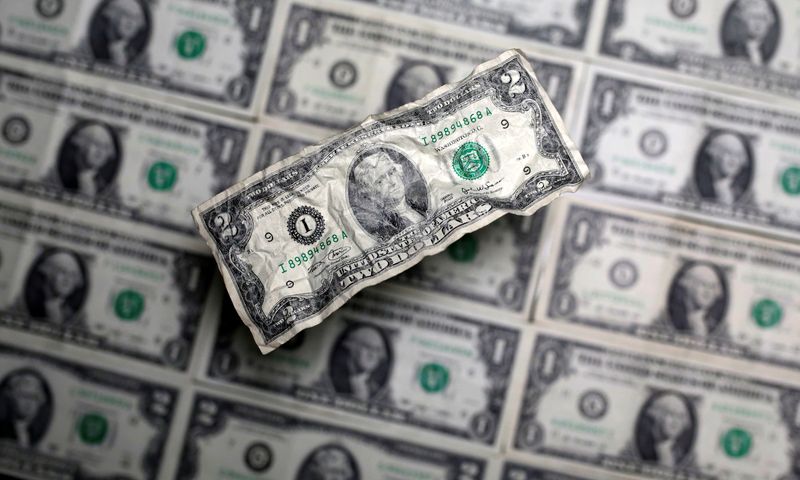By Stanley White
TOKYO (Reuters) - The dollar recovered slightly on Tuesday from heavy losses against the yen, the euro and the Swiss franc, supported by hopes for U.S. economic stimulus and a bounce in Treasury yields.
The greenback started to grind higher as U.S. stock futures rose after U.S. President Donald Trump said the White House will hold a news conference on Tuesday about economic measures in response to the coronavirus outbreak.
U.S. Treasury Secretary Steve Mnuchin also said the White House will meet with bank executives this week in a sign the U.S. government is preparing to roll out more measures to soften the blow from the spread of the flu-like virus.
However, analysts say it is too early to call a bottom in the dollar, which was pummelled on Monday after a price war between Saudi Arabia and Russia triggered the biggest daily rout in oil prices since the 1991 Gulf War.
"Expectations for a coordinated policy response are something that is evolving and ultimately this could help," said Rodrigo Catril, senior FX strategist at National Australia Bank in Sydney.
"But in the short term the dollar is driven by expectations for U.S. Federal Reserve easing."
The dollar rose 1% to 103.26 yen
Against the euro (EUR=EBS), the greenback rose 0.17% to $1.1410 after falling on Monday to its lowest in more than a year against the common currency.
The dollar rose 0.39% to 0.9288 Swiss franc
Against the pound
The dollar gradually accelerated after U.S. stock futures opened higher (ESc1) and Treasury yields (US10YT=RR) climbed off record lows.
Oil futures also stabilised somewhat in Asia on Tuesday after the previous day's dive, as global markets tried to regain some composure, but many traders warn that recent turmoil has been so dramatic that risks are still tilted down.
The plunge in crude prices on Monday was yet another jolt to financial markets, which were already reeling as investors counted the mounting economic costs of a global coronavirus epidemic.
In the onshore market, the yuan
However, its rapid spread in Italy and the United States is likely to keep investors on edge.
Money markets show the Fed, which stunned investors with a surprise 50 basis point rate cut last week, is likely to ease policy further in the future. [FEDWATCH]
The Fed is also injecting cash into the banking system in a sign of underlying financing stress in the world's largest economy.
Expectations for Fed easing are likely to bring the dollar and U.S. yields back down, but for the time being on Tuesday the greenback got a brief respite.
The currencies of oil-producing countries also managed to rise slightly after a mauling on Monday.
The Russian rouble

The Australian